Abstract
The degradation of aquatic ecosystems due to hydrologic and water quality impacts of urbanization, combined with increasing water scarcity, has generated increasing interest in the harvesting of urban storm water. This paper reviews the rationale for integrated storm water treatment and harvesting and synthesizes recent advances and trends and knowledge gaps that limit its application. Storm water harvesting is shown to be a viable alternative water supply and to provide a potential solution to the increases in runoff frequency and peak flows that occur as a result of catchment urbanization. In general, treatment technologies for storm water harvesting have been adapted from existing "water-sensitive urban design" approaches, with limited use of traditional water supply and wastewater technologies. Risk management is often lacking, in part due to a lack of relevant guidance. Reported performance shows variable levels of potable water savings, with cases of up to 100% substitution recorded. Costs of storm water harvesting systems are shown to be inversely related to their scale. The limited cost data show the importance of context, with the harvested water costing more or less than alternative supplies, depending on the cost of the alternative. Limited data exist on environmental benefits, such as reductions in pollutant loads and flow peaks. Implementation of storm water harvesting systems is impeded by inadequate data on risk, lifecycle costs, externalities, and water-energy tradeoffs. Furthermore, retrofit of storm water harvesting into existing urban areas is proving to be a challenge, creating an urgent need for specific technologies for use in retrofit situations.URL
http://www.ncbi.nlm.nih.gov/pubmed/18765758Case study
One or more case studies to which this source is related (if applicable).
Last modified: Jan. 28, 2016, 5:20 p.m.


 Ελληνικά
Ελληνικά